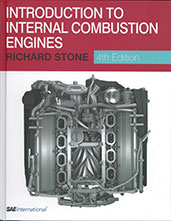Technical Paper
Analysis of Combustion and Particulate Emissions when Hydrogen is Aspirated into a Gasoline Direct Injection Engine
2010-04-12
2010-01-0580
A single-cylinder Gasoline Direct Injection Engine (GDI) engine with a centrally mounted spray-guided injection system (150 bar fuel pressure) has been operated with stoichiometric and rich mixtures. The base fuel was 65% iso-octane and 35% toluene; hydrogen was aspirated into a plenum in the induction system, and its equivalence ratios were set to 0, 0.02, 0.05 and 0.1. Ignition timing sweeps were conducted for each operating point. Combustion was speeded up by adding hydrogen as expected. In consequence the MBT ignition advance was reduced, as were cycle-by-cycle variations in combustion. Adding hydrogen led to the expected reduction in IMEP as the engine was operated at a fixed manifold absolute pressure (MAP). An engine model has also been set up using WAVE. Particulate Matter (PM) emissions were measured with a Cambustion DMS500 particle sizer.

